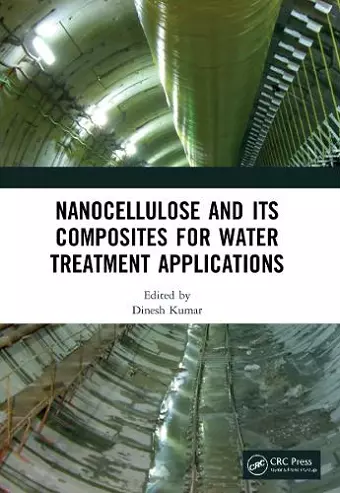Nanocellulose and Its Composites for Water Treatment Applications
Format:Paperback
Publisher:Taylor & Francis Ltd
Published:7th Oct '24
£45.99
Supplier delay - available to order, but may take longer than usual.
This paperback is available in another edition too:
- Hardback£145.00(9780367487331)

Biological materials and their applications have drawn increasing attention among scientists. Cellulose is an abundant, renewable, biodegradable, economical, thermally stable, and light material, and it has found application in pharmaceuticals, coatings, food, textiles, laminates, sensors, actuators, flexible electronics, and flexible displays. Its nano form has extraordinary surface properties, such as higher surface area than cellulose; hence, nanocellulose can be used as a substitute for cellulose. Among many other sustainable, functional nanomaterials, nanocellulose is attracting growing interest in environmental remediation technologies because of its many unique properties and functionalities.
Nanocellulose and Its Composites for Water Treatment Applications supplies insight into the application of nanocellulose and its nanocomposites for water purification and remediation. It covers different classes of nanocellulose—cellulose nanocrystal (CNC), microfibrillated cellulose (MFC), hairy cellulose nanocrystalloid (HCNC), and bacterial nanocellulose (BNC)—for their competency with other renewable and carbonaceous materials such as pectin, alginate, and CNTs. Future perspectives of nanocellulose and nanocomposites gleaned from different biodegradable origins are also discussed.
This book delves into an updated description of the basic principles and developments in synthesis, characterization methods, properties (chemical, thermal, optical, structural, surface, and mechanical structure), property relationships, crystallization behavior, and degradability of biodegradable nanocomposites. The book also supplies vivid information about various cellulose nanomaterials and their applications in absorbing organic and inorganic toxins, membrane filtration of bacteria, viruses, and ionic impurities, photocatalytic dye removal, and sensing of water toxins.
Features
- Details the synthesis and characterization methods of nanocellulose
- Illustrates the applications of nanocellulose and its nanocomposites
- Shows in-depth accounts of the various types of properties of nanocellulose and its composites
- Features emerging trends in the use of nanocellulose as adsorbents, sensors, membranes, and photocatalysis materials
This book will be useful for academics, researchers, and engineers working in water treatment and purification.
ISBN: 9781032023373
Dimensions: unknown
Weight: 453g
218 pages